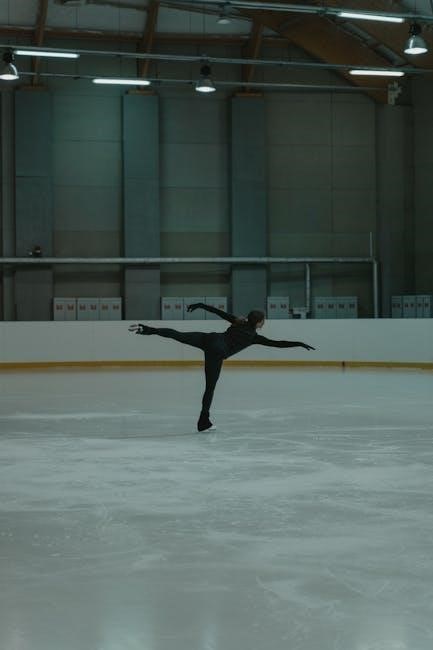Understanding Meniscus Tears
The meniscus is a cartilage structure in the knee that cushions and stabilizes the joint, facilitating smooth movement. Injuries or wear and tear can cause tears.
What is a Meniscus?
The meniscus is a thick, rubber-like cartilage structure in the knee joint that acts as a shock absorber and stabilizer. There are two menisci in each knee: the medial (inner) and lateral (outer). These cartilage pads cushion the joint, reducing friction during movement and distributing weight evenly. They play a crucial role in maintaining knee stability and facilitating smooth motion. Injuries or degeneration can lead to tears, causing pain and instability. Understanding the meniscus is essential for addressing injuries and developing effective recovery strategies, including targeted exercises to restore function and strength.
Causes and Symptoms of Meniscus Tears
Meniscus tears often result from sudden twists, direct blows, or repetitive stress on the knee. Aging can also lead to degenerative tears as cartilage wears down. Symptoms include pain, especially when bending or twisting, swelling, and limited mobility. Some individuals may experience a “locking” sensation if a torn piece obstructs joint movement. Instability or a feeling of the knee “giving way” is common. Pain may worsen during activities like climbing stairs or squatting. Mild tears might cause minimal discomfort, while severe tears can significantly impair daily functioning. Early diagnosis is crucial to prevent further damage and ensure proper treatment. Understanding these causes and symptoms aids in developing effective recovery strategies.

Importance of Exercise in Meniscus Tear Recovery
Exercise plays a vital role in meniscus tear recovery by promoting blood flow, strengthening surrounding muscles, and restoring joint mobility, which are essential for healing and preventing future injuries.

How Exercise Promotes Healing
Exercise enhances blood circulation around the knee, delivering essential nutrients and oxygen to the damaged meniscus, which promotes healing. Strengthening the muscles around the knee improves joint stability and reduces strain on the meniscus. Low-impact exercises, such as straight-leg raises and heel slides, can be performed without putting excessive pressure on the knee, making them ideal for early recovery. As the injury progresses, more dynamic exercises help restore full range of motion and strength, ensuring the knee returns to optimal functionality. Regular, controlled movement prevents stiffness and supports the natural repair process of the meniscus, reducing the risk of chronic pain or further injury. Consistency in exercise routines is key to fostering a successful recovery.
Key Goals of Meniscus Tear Exercises
The primary objectives of meniscus tear exercises are to reduce pain, restore mobility, and strengthen the muscles around the knee. These exercises aim to improve joint stability, ensuring the knee functions properly without putting excessive strain on the meniscus. Enhancing flexibility and range of motion is also crucial to help patients return to their daily activities and sports. Strengthening the quadriceps, hamstrings, and calves provides additional support to the knee, reducing the risk of reinjury. Additionally, these exercises focus on improving balance and proprioception, which are essential for overall knee health. By achieving these goals, individuals can safely progress to more demanding activities and maintain long-term knee function. Consistency and proper form are vital to ensure effective recovery.

Best Exercises for Meniscus Tear Recovery
Effective exercises for meniscus tear recovery include low-impact activities like straight-leg raises, wall slides, and gentle cycling to promote healing and restore knee function.

Initial Phase: Low-Impact Exercises
In the initial phase of recovery from a meniscus tear, low-impact exercises are essential to avoid further injury while promoting healing. Straight-leg raises are a fundamental exercise, where the injured leg is lifted without bending the knee, strengthening the quadriceps muscles. Wall slides are another effective option, involving sliding the back of the leg down a wall to maintain knee mobility. Gentle cycling on a stationary bike or elliptical machine is also recommended to improve circulation and joint movement without excessive strain. These exercises help restore basic functionality and prepare the knee for more advanced movements in later stages of recovery. Consistency is key during this phase to ensure a solid foundation for healing.
Intermediate Phase: Strengthening Exercises
In the intermediate phase, the focus shifts to strengthening the muscles around the knee to enhance stability and support the meniscus. Mini squats are an excellent exercise, performed by bending the knees slightly while keeping the back straight. Standing heel raises, where the heels are lifted off the ground, strengthen the calf muscles and improve balance. Hamstring curls, done by lifting the heel toward the buttocks, target the back thigh muscles. Resistance bands can also be used to add challenge to these exercises. It’s important to maintain proper form and gradually increase resistance to avoid overexertion. These exercises help rebuild muscle strength, preparing the knee for more dynamic activities in the advanced phase of recovery. Consistency and controlled movements are key to achieving optimal results.
Advanced Phase: Mobility and Stability Exercises
In the advanced phase, exercises focus on improving joint mobility and stability, ensuring the knee can handle more complex movements. Straight leg raises, where the injured leg is lifted while keeping it straight, enhance quadriceps strength and control. Balance exercises, such as standing on one leg or using a wobble board, improve proprioception and reduce the risk of re-injury. Gentle agility drills, like side-to-side shuffling or figure-eight walks, promote functional movement. These exercises are designed to restore full range of motion and prepare the knee for daily activities or sports. Progressing slowly and avoiding pain is crucial to prevent setbacks and ensure long-term recovery. Consistent practice of these exercises helps achieve a stable and mobile knee joint.

Creating a Personalized Exercise Plan
A personalized exercise plan tailored to your injury and recovery goals ensures safe and effective progress. It involves assessing your current condition, setting realistic objectives, and selecting exercises that promote healing while minimizing strain. Regular adjustments and professional guidance are essential to adapt to your progress and avoid overexertion. This approach helps optimize recovery outcomes and supports long-term knee health.
Consulting a Physical Therapist

Consulting a physical therapist is crucial for developing an effective exercise plan tailored to your meniscus tear recovery. They will assess your injury, strength, and mobility to create a personalized program. A physical therapist can demonstrate proper exercise techniques, ensure safe progression, and adapt the plan as you heal. They will also monitor your progress, providing feedback to avoid overexertion and prevent future injuries. With their expertise, you can focus on exercises that promote healing, strengthen surrounding muscles, and restore knee function. Regular sessions and home exercises guided by a therapist enhance recovery efficiency and support long-term knee health. This collaborative approach ensures a safe and effective path to full mobility.
Tracking Progress and Avoiding Overexertion
Tracking progress is essential to ensure safe and effective recovery from a meniscus tear. Keep a journal to record exercises, pain levels, and improvements in strength or mobility. This helps identify patterns and adjustments needed. Avoid overexertion by listening to your body—stop if pain exceeds mild discomfort. Gradually increase exercise intensity and duration to prevent setbacks. Rest and recovery are as important as active exercises. Consistency is key, but pushing too hard can worsen the injury. Celebrate small milestones, like increased range of motion or reduced pain, to stay motivated. Regular check-ins with your physical therapist ensure you’re on the right track and help prevent overexertion. Patience and adherence to your plan are vital for a successful recovery.
Consistent adherence to a personalized exercise plan is crucial for effective recovery from a meniscus tear. Proper exercises, combined with rest and patience, promote healing and prevent future injuries.
The Role of Consistency in Recovery
Consistency is the cornerstone of recovery from a meniscus tear. Regular performance of prescribed exercises ensures gradual strengthening of the knee joint and surrounding muscles. It promotes proper healing, prevents re-injury, and restores functional mobility. Skipping workouts can hinder progress and prolong recovery time. A structured routine, even with small daily efforts, fosters long-term benefits. Patience and dedication are essential, as the body needs time to repair and adapt. Overexertion should be avoided to prevent setbacks, making consistency a key factor in achieving a full and sustainable recovery.
Preventing Future Injuries
Preventing future injuries after a meniscus tear involves a combination of targeted exercises, proper technique, and lifestyle adjustments. Strengthening the thigh muscles, particularly the quadriceps and hamstrings, helps stabilize the knee joint and reduce stress on the meniscus. Incorporating flexibility exercises improves range of motion and reduces stiffness. Wearing appropriate footwear and using supportive devices during physical activities can minimize repetitive strain. Additionally, maintaining a healthy weight reduces pressure on the knee joint. Avoiding high-impact sports or activities that involve excessive twisting or pivoting can further lower the risk of re-injury. Regular check-ups with a healthcare provider ensure any potential issues are addressed early. A proactive approach to knee health is essential for long-term injury prevention.
